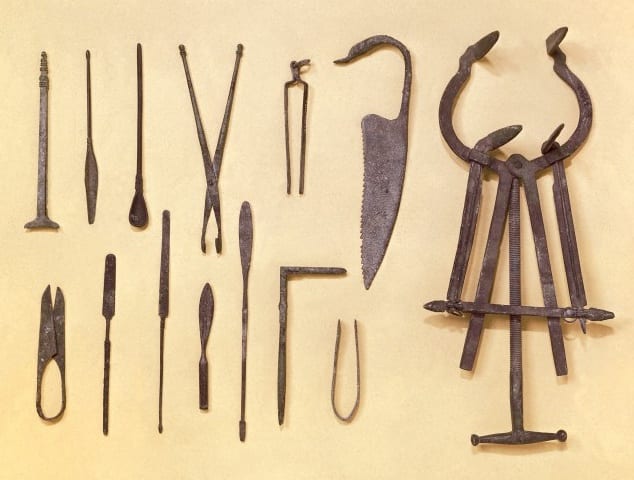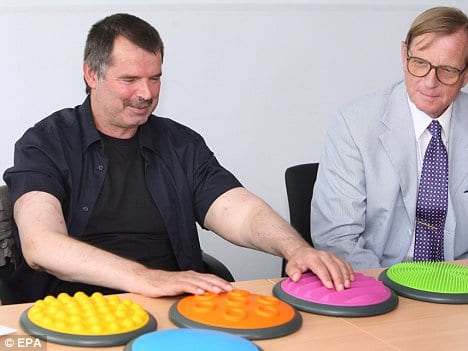Things I Bet You Never Knew About Plastic Surgery: A Brief History
A Brief History
If you think about it, every modern technological luxury we enjoy today had to start somewhere. Can you imagine the first person who decided to attempt to alter someone’s appearance with sharp implements? Let alone the first person who volunteered to have it done to them? Well for most of you who have had or are considering having plastic surgery of some form be glad our techniques today are the fine-tuned product of thousands of years of trial and error.
Yes, you read it right, THOUSANDS of years. Allow me to introduce the Edwin Smith Papyrus named after the American Egyptologist who found the scroll. It is the oldest known account of surgical appearance enhancement and it contains hieroglyphs describing trauma to the nose and the consequential repair of its bone and tissue. This is generally known to be the earliest account of plastic surgery.
But to be historically correct, the official title of “father of plastic surgery” (or rather fathers) has already been bestowed on both Gaspare Tagliacozzi, an Italian surgeon from the 16th century, and Harold Gillies, a 19th-century surgeon from New Zealand. They are both revered amongst today’s surgeons for their innovative contributions to plastic surgery as we know it. However, Europeans didn’t learn their craft by merely having an original idea and tinkering around with people’s faces and bodies. No, the first RECORDED plastic surgeon in history was actually an Indian healer named Sushruta.
Sushruta lived in India around 600 years BC, long enough ago to earn him a mention in the epic ancient Hindu poem, the Mahabharata, where it’s mentioned that he is actually the son of a legendary Hindu sage (a healer and wiseman). However, Sushruta’s true legacy is the Sushruta-samhita, a Sanskrit text that served as a guide to ancient plastic surgery and is considered even until this day to be the founding text for modern surgery. In it, he describes a wide variety of cosmetic procedures, including skin grafts and other relatively complex forms of plastic surgery. Can you imagine? Two-thousand four hundred years ago someone was trying to do this stuff? Have a look below to see some examples of surgical tools from Greco-Roman times.
*Winces*
Many hundreds of years later, during the colonization of India, the British were the ones who learned about plastic surgery from Indian surgeons. There is one tall tale about two British soldiers witnessing an Indian mason repair the nose of a British driver. There are also other accounts that state the mason was actually a trained plastic surgeon. Sorta makes sense, right? Anyhow, in 1794 the “British Gentleman’s Magazine” gave a plug to the story and thusly the Sushruta-samhita became the modern foundation of plastic surgery for the Brits and carrying its influences through Europe.
Meanwhile, before the Sushruta-samhita became the modern guide for plastic surgery in Europe, Europeans themselves did quite a bit of tinkering on their own. Mainly influenced by the Greco-Roman practices that were going on about the same time as Sushruta’s practices, was Europe’s own pioneering of plastic surgery during the Renaissance. And who exactly was doing these sorts of surgeries? BARBERS. Yup! Plastic surgery was performed in Barber Shops, along with dentistry…yeah. DENTISTRY. The then-called “Barber Surgeons” handled a variety of procedures during this time period. They would touch up wounds, pull teeth, amputate limbs, and, of course, cut hair. Plastic surgery was also among their list of specialties. Talk about a Jack of all trades. Let’s all take a moment to thank the fact our modern day hairdressers don’t do our root canals and that our dentists don’t perform nose jobs!
For many hundreds of years, plastic surgery was considered largely experimental and treated with negative judgment and skepticism by many doctors in the Western medical industry. However, as injured soldiers returned from World Wars I and II, plastic surgery became a cornerstone in treating the wounded and disfigured and gained new ground as being a functional form of medicinal study and practice.
As more and more soldiers came back from the war, plastic surgeons stepped up to treat them. Nine trauma centers opened within the United States specifically to treat the facial disfigurements from battle. The British also saw an increase in reconstructive surgery during those years. Sir Archibald McIndoe, a plastic surgeon from New Zealand, converted London’s famous Queen Victoria Hospital into a center that specialized in treating burn victims during WWII. It was during this time that gave Plastic surgeons the chance to refine old techniques and develop new ones. For example, the first modern rhinoplasty (nose job) was performed around this time in 1923, and the first modern face-lift was performed in 1931.
But even before all of this, there were doctors tinkering with the aesthetic aspect of plastic surgery now known cosmetic surgery. The first recorded breast augmentation took place in the US around 1903 where surgeon Charles Miller used (get ready for this) silk and celluloid for his implants. Other implants were made of rubber, paraffin, ivory, vegetable oil, beeswax and even, gulp….glass?!? Thankfully, the first silicone breast implant was developed in 1961 by American plastic surgeons Thomas Cronin and Frank Gerow.
Furthermore, plastic surgeons from the early 20th century are actually some of the world’s biggest safety advocates. So, the next time you drive your car take a good look at your windshield. Yup, You have The American Society of Plastic Surgeons (ASPS) to thank for the innovation of shatterproof glass! Both emergency medical personnel and plastic surgeons in the early 20th century petitioned to have shatterproof windshields made standard for all vehicles. Before these windshields came into play, severe lacerations on the face and hands from otherwise minor accidents were an everyday occurrence.
And also speaking of safety, surgeon George Crikelair definitely deserves a mention. He helped bring us the Flammable Fabrics Act of 1953 which established essential safety regulations for materials used for clothing.
Furthermore, we have surgeons of the 1960s and 1970s to thank for extensive research in the utilization of plastic surgery for cosmetic reasons. Procedures were developed for those who desired a change in their appearance to boost confidence and improve self-esteem. These types of procedures became more commonplace during that time and include breast implants, butt lifts and botox for cosmetic use (approved in 1977).
But most cosmetic procedures started out as a purpose for a medical reason. For example, the breast implant was developed after a woman had a tumor removed and the doctor used an implant to reshape the breast.
Botox was also originally used for eye and facial muscles disorders. Now it is used to prevent ‘frown lines’ and ‘crows feet’ around the eyes and mouth.
Nowadays plastic surgeons continuously look for ways to make their services more accessible to the general public. Many have fought continuously over the years with insurance companies for coverage of post-mastectomy breast reconstructions and reconstructive surgeries for children born with facial deformities.
Most recently, at the turn of the 21st century, body modification has seen some wild developments. Enter: body part transplantation! Dr. Warren Breidenbach performed the first successful hand transplant in 1999 and following shortly thereafter was the first ever successful partial face transplant in 2005 followed by a successful full face transplant in 2010. Also nothing short of absolutely incredible, in 2008 Dr. Christoph Hoehnke was able to complete a double arm transplant where he gave a 54-year-old man the arms of a 19-year-old! Pictured below.
As time progresses it seems that there is no limitation it seems to the advances in plastic and cosmetic surgery. With the growth of the normalization of cosmetic surgery, the amount of people undergoing surgery has risen as well.
According to USA Today, nearly 1.8 million Americans had plastic surgery of some sort in 2016. Some say the growth could be attributed to the greater public awareness about the success of the surgeries and procedures.
There was once a time when people would be “tarred and feathered”, so to speak, for getting plastic surgery. Now, with the rise of social media, many have embraced the procedures, often posting pictures of their surgeries and the journey to their recoveries telling their own story on places like Twitter, Facebook, Instagram and even Snapchat.
Fifteen years ago a nose job could put someone in the hospital for two to three days. Today, it takes just a few hours. Many of the newer non-invasive surgeries such as fillers to perform a nose job didn’t exist even a decade ago.
So there you have it! You can find all the LATEST procedures here at CosMed and VIDA, performed by board-certified plastic board-certified surgeons. Everything from facelifts to breast augmentations, rhinoplasty to Brazilian butt lifts. You can contact us for more information at 1-877-235-1968 or contact@cosmedclinic.com.
Make sure you follow us on Facebook! We will be posting daily trivia and drawing 1 person at random on December 15th who participates in answering the questions and rewarding them with a $100 gift card just in time for the holidays! The more you participate, the greater your chance!
Popular cosmetic surgical procedures of 2016:
1. Breast augmentation: 290,467 procedures
2. Liposuction: 235,237 procedures
3. Nose reshaping: 223,018 procedures
4. Tummy tuck: 127,633 procedures
5. Buttock augmentation: 18,489 procedures


